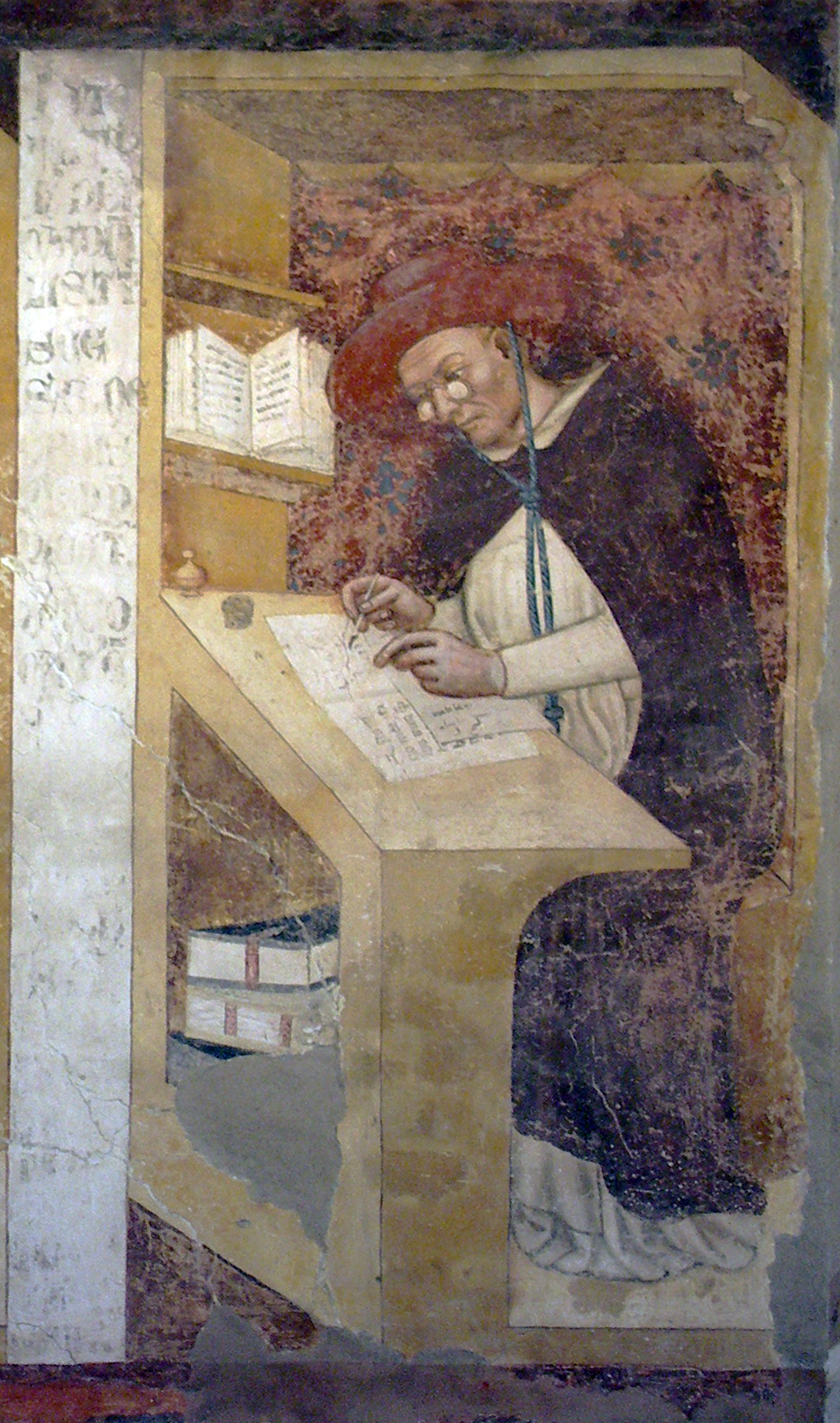In fact, this final detail is a mistake, an anachronism. Hugh died acouple of decades too early to have benefitted from this invention:two magnifying glasses bound together by a rivet in their handles.
The image of Hugh of Saint-Cher wearing glasses in the fresco at the former convent of San Niccolò, Chapter Room, Treviso, is an anachronism as their invention was decades following his death in 1263.
 Image from:
Image from: